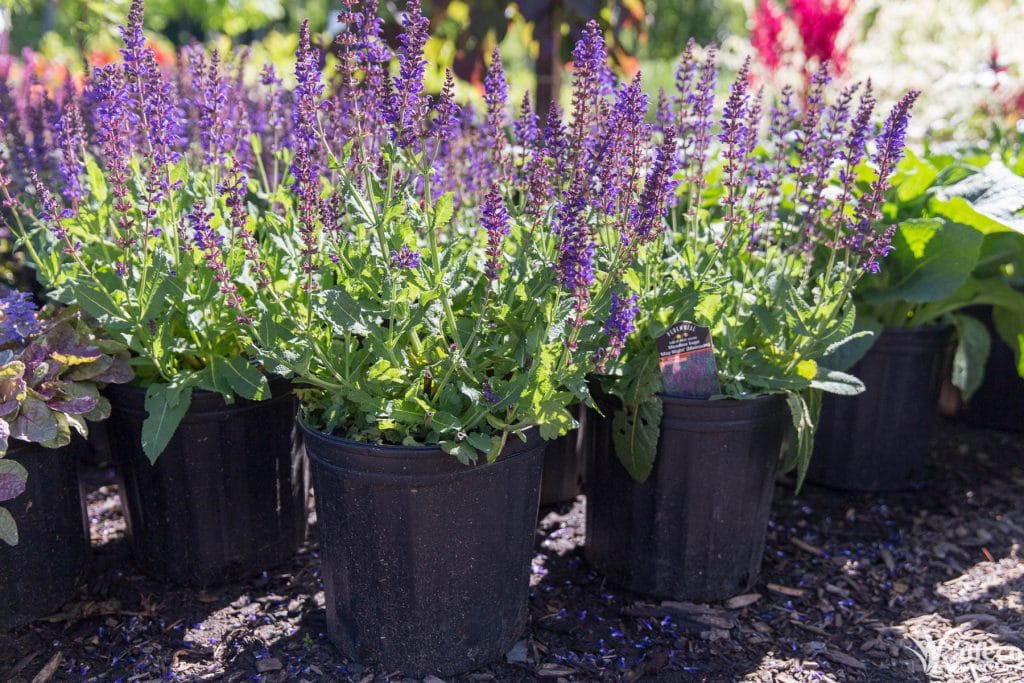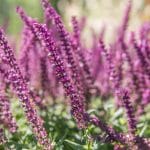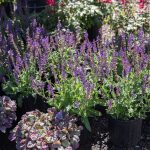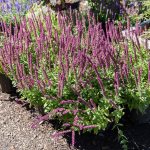Common Varieties: “Meadow Sage” (the most common perennial Salvia), “May Night”.
Similar and Related Plants: Lavender, Nepeta “Catmint”, Russian Sage.
Description: Salvia is the name a a group of plants in the mint family, including sage. Since it refers to a group and not a specific plant, Salvia plants come in a huge variety of shapes, colors, and sizes. The most common varieties found in gardens are usually upright, flowering perennials. These types generally have long, low-growing green foliage. The flowers grow on long stocks that sprout from the base of the plant. Flowers are small and trumpet-shaped, tightly clustered, and come in shades of purple, magenta and pink, and often white. In addition, plants in the Salvia family are generally very fragrant, which makes them attractive to pollinators.
Planting and Growth Habits: Like most perennials, Salvia are best installed in the spring or late fall. They should be watered regularly during establishment, but afterward are very low-maintenance. A spot will full-sun and well-drained soil is ideal. They should be cut back at the end of the growing season to allow for optimal growth next season. Dead-heading past-prime flowers throughout the blooming period will allow new blooms to shoot up more quickly. The flowers generally appear in the late spring and bloom continually into the early fall, if the weather remains warm.
Salvia can reach 18″-24″ in height, making them a great low hedge or border plant. The upright shape and bright colors make them a great addition to perennial garden for structural interest, or in foundation plantings with woody shrubs like Boxwood or Spirea.
Special Features: Deer-resistant; hardy; low-maintenance; drought-tolerant; color; vertical; great for pollinators.
Complements: Since they’re attractive to pollinators, planting Salvia with other bee-favorites works well; try Monarda (“bee balm”), Echinacea, shrub roses, day-lilies (Meghan suggests “Stella D’Oro”), or with ornamental grasses. They’re also a great way to add color and texture to lower parts of foundation plantings, and make a lovely border along garden paths or fence lines.
- Detail of Flower Stalks
- Common Perennial Salvia
- “Sensations” Deep Rose
- Honey Bee Feeding on Salvia









